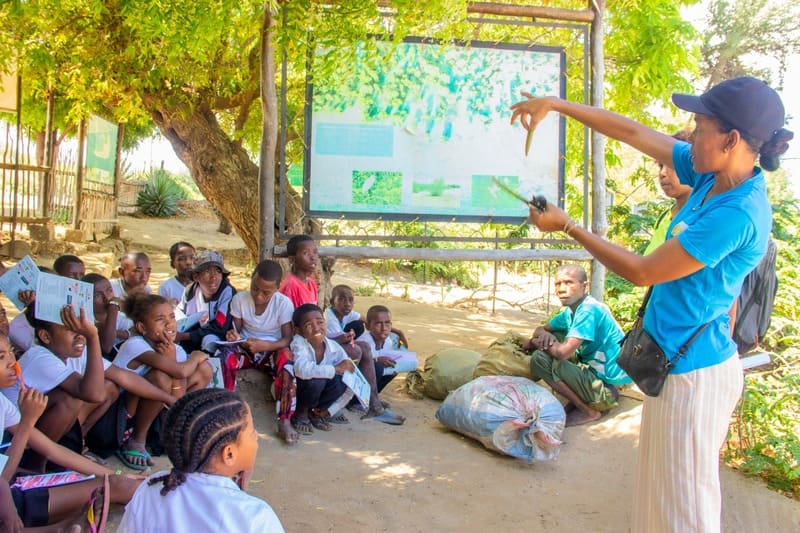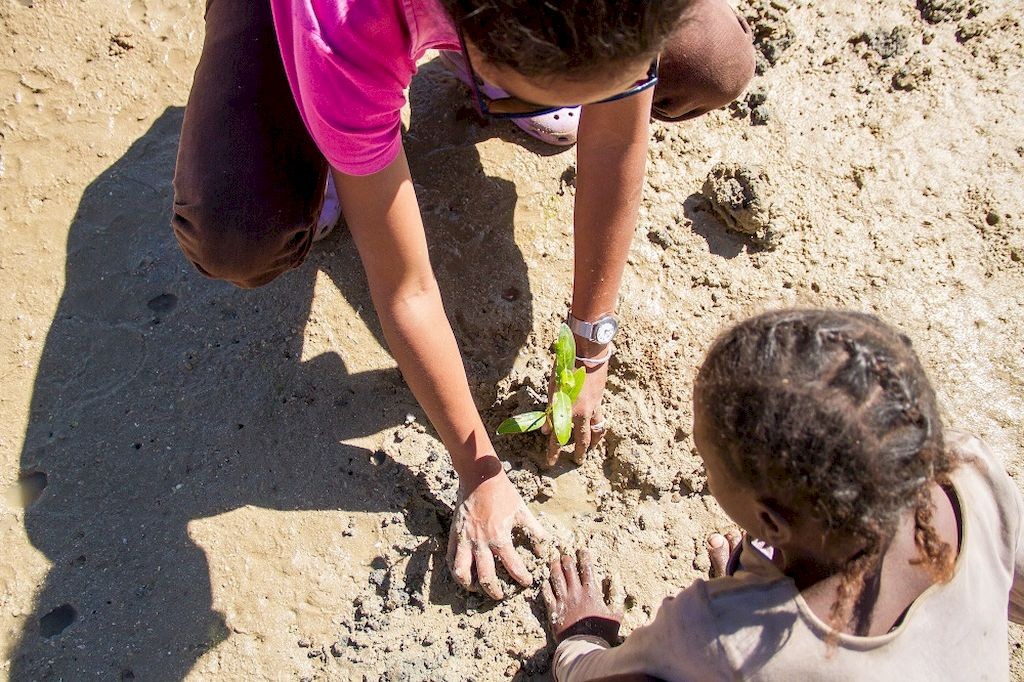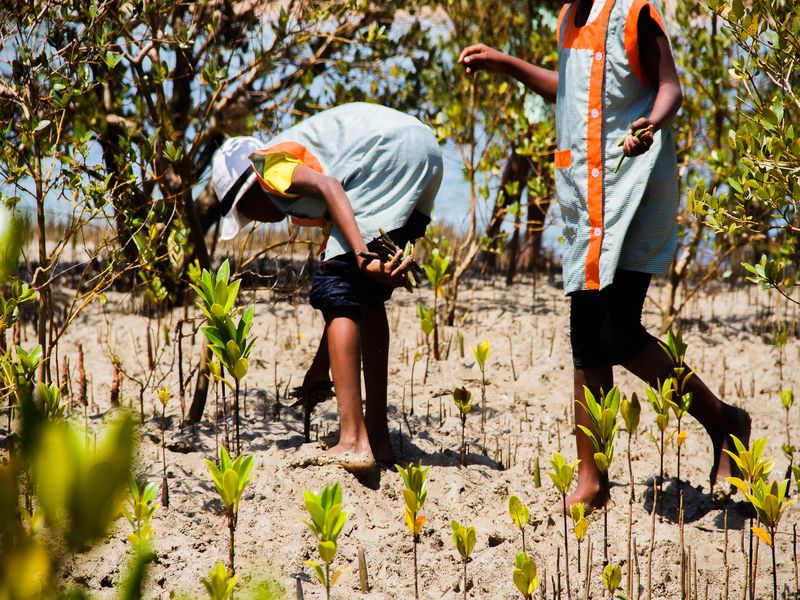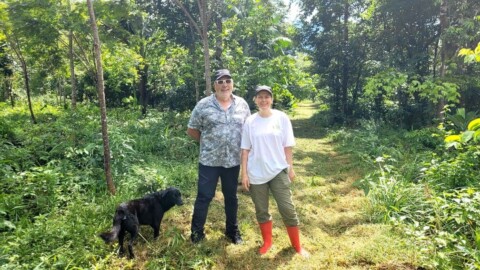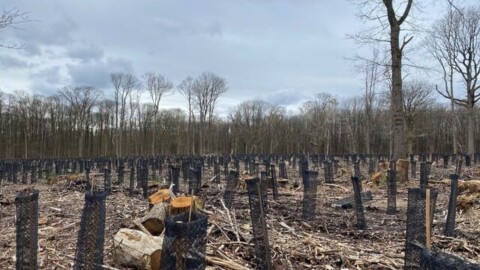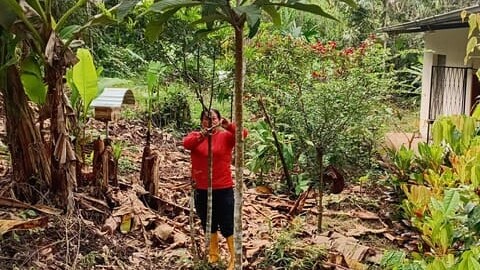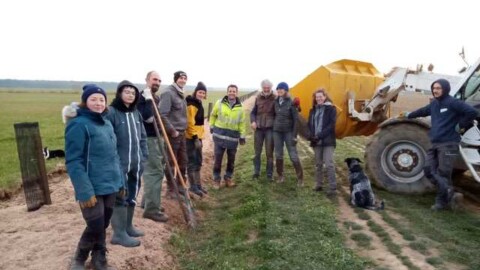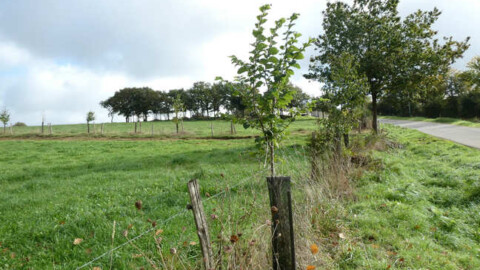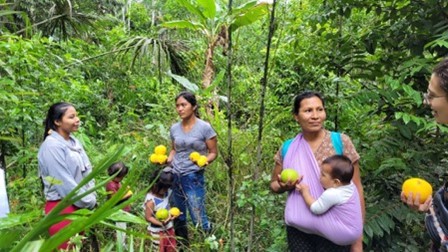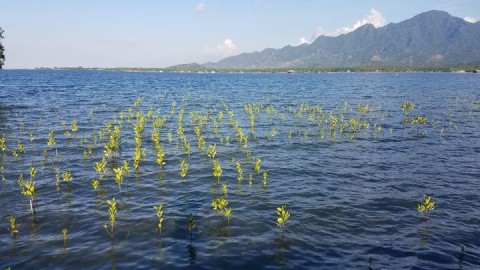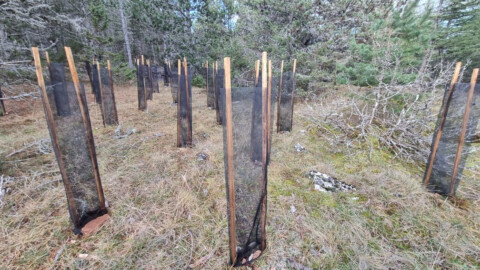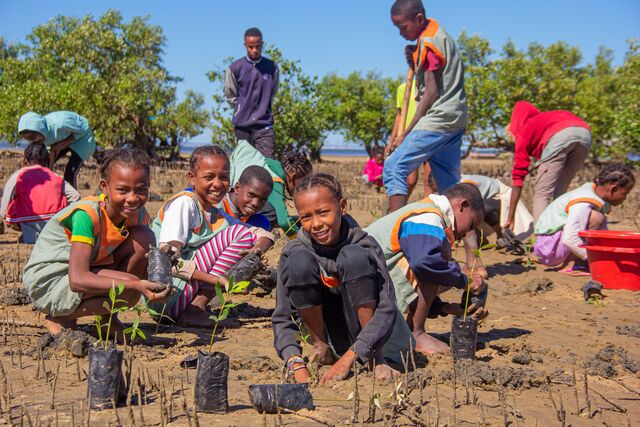
Tulear, Madagascar, August 2025
This project is taking place in a fragile environmental and social context, where local communities are directly threatened by deforestation, erosion, and food insecurity. In Madagascar, the objective is to raise awareness of environmental protection among younger generations while restoring an ecosystem, vital both for biodiversity and the livelihoods of families.
The project aims to plant 4,400 trees from five species of mangroves (red, orange, yellow, grey, and flowering) on a three-hectare site near Toliara. These trees, well suited to local conditions, will help tackle erosion, provide a habitat for fauna and flora, boost marine biodiversity, and contribute to food security for local people. On the educational side, every child who participates invited to plant their own tree, thereby discovering the essential role of mangroves and the impacts of their action for future generations.
The first steps involved selecting the schools to take part in the project. Pupils from Salines school in Ankiembe Haut – over 690 children aged between 8 and 15, together with their teachers – joined in the activities. At the same time, families from neighbouring villages and local authorities also took part, thus strengthening the roots of the project in the community.
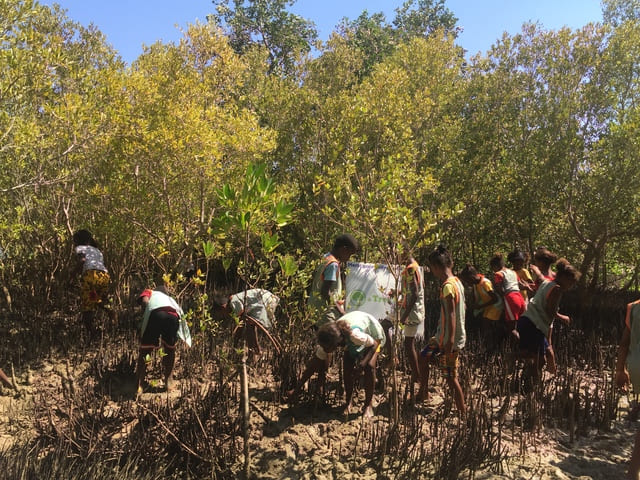
Training and awareness-raising activities were then carried out in November 2024. Children and their teachers attended a workshop led by environmental educators and technicians. They learned about the life cycle of mangroves and their importance to humanity, as well as methods of conserving biodiversity.
Seed and propagule collection was a key stage. In January and February 2024, 2,400 grey and flowering mangrove seeds were placed in a nursery, producing 2,200 seedlings. In November 2024, a mission to collect red, yellow, and orange mangrove propagules gathered more than 6,800 units, 2,200 of which were earmarked for this particular project.
These collections led to several reforestation days in Tsingoritelo. In June 2024, grey and flowering mangroves were successfully planted. In November 2024, a further 2,200 propagules were put into the ground. Altogether, the target of 4,400 trees planted was reached, with the active participation of hundreds of pupils and teachers.
Today, the project has already borne fruit. Pupils have become aware of the importance of mangroves and taken real action to preserve them. Local communities are benefiting from their regenerated environment, and the collective momentum remains strong.
Looking ahead, efforts will focus on regular monitoring of the plantations to ensure their long-term survival. A last planting phase was planned in June 2025, once again involving children, teachers, and local inhabitants. This participatory approach is key to the success of the project: sustainably restoring mangroves while educating future generations about protecting their environment.


